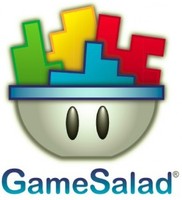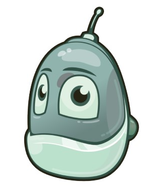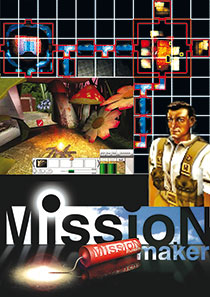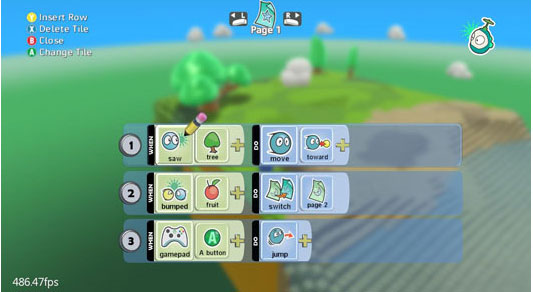Game Based Learning
Playing and Creating Interactive Games can offer a huge stimulus for students and teachers in achieving learning outcomes. Below is a list of Free and Paid-for resources to get you started.
TouchDevelop

TouchDevelop is an online app creation tool from Microsoft Research. Originally designed to develop Windows Phone 7 apps, TouchDevelop has recently been updated as a web app and now allows you to develop Windows Store apps suitable for Windows 8 touch screen devices. TouchDevelop is easy to use and works with several web browsers.
Website: touchdevelop
Website: touchdevelop
Game Maker 8
Game Maker 8 makes it easy to create great games without having to learn a programming language or spend a lot of time. Many tutorials and resources are available, along with a lot of help from the community. Users can create any type of game they can think of, be it platforming, role-playing, racing, adventure, or any other type. After users get comfortable with Game Maker 8′s drag-and-drop interface, they can explore the software deeper and unlock its true potential with the built-in custom programming language.
Website: YoYoGames
Website: YoYoGames
Mission Maker
|
MissionMaker lets students rapidly create visually 3D rich worlds for first-person 'Missions' - complete with sets, animated characters, dialogue and music. Students can:
Website: Immersive Education |
Stencyl

Stencyl is a free game creation platform that allows students to create 2D games for mobile devices and for the web. The software is also available in paid format. This gives you the ability to upload your finished games to the iTunes App Store.
Stencyl is a fantastic introduction to game design and a natural progression from Scratch (see comparison below).
Currently the software allows students to export games as Flash, to be used on the web, and as iOS applications, to be used on mobile devices (using XCode). Stencyl has recently annunced future support for games using HTML5 and mobile devices using Android.
Stencyl is a fantastic introduction to game design and a natural progression from Scratch (see comparison below).
Currently the software allows students to export games as Flash, to be used on the web, and as iOS applications, to be used on mobile devices (using XCode). Stencyl has recently annunced future support for games using HTML5 and mobile devices using Android.
Price: Free
Website: Stencyl
Website: Stencyl
GameSalad

GameSalad allows members to design, publish and distribute original games without programming knowledge, and play with others across multiple platforms, such as the iPhone, iPad, Mac and any other Internet-connected device.
Resources: Unofficial GameSalad Textbook -
http://itunes.apple.com/app/an-unofficial-gamesalad-textbook/id409726843
Resources: Unofficial GameSalad Textbook -
http://itunes.apple.com/app/an-unofficial-gamesalad-textbook/id409726843
Alice

Alice is a free and open source 3D programming environment designed to teach students object-oriented and event-driven programming. In Alice, students drag and drop graphic tiles in order to animate an object and create a program. Alice is great for creating an animation for telling a story, playing an interactive game, or a video to share on the web. Extensive support materials are provided.
Kodu

Kodu is a new visual programming language made specifically for creating games. It is designed to be accessible for children and enjoyable for anyone. The visual nature of the language allows for rapid design iteration using only an Xbox game controller for input (mouse/keyboard input is also supported).
Kodu provides an end-to-end creative environment for designing, building, and playing your own new games. The core of the Kodu project is the programming user interface. The language is simple and entirely icon-based. Programs are composed of pages, which are broken down into rules, which are further divided into conditions and actions. Conditions are evaluated simultaneously.
Kodu provides an end-to-end creative environment for designing, building, and playing your own new games. The core of the Kodu project is the programming user interface. The language is simple and entirely icon-based. Programs are composed of pages, which are broken down into rules, which are further divided into conditions and actions. Conditions are evaluated simultaneously.
Quest

Thanks to Quest, you can now create your very own 80's style text adventures. Quest has a variety of uses in education, within a range of subjects and at a range of levels. Best of all, it's free.
Perhaps the most obvious use of Quest is within ICT/Computing. Quest provides a gentle introduction to programming concepts – variables, functions, loops, expressions, objects, etc. – and the visual editor means that students don’t need to remember commands or syntax.
Being text-based means that students can create complete games without needing to spend time creating graphics.
Perhaps the most obvious use of Quest is within ICT/Computing. Quest provides a gentle introduction to programming concepts – variables, functions, loops, expressions, objects, etc. – and the visual editor means that students don’t need to remember commands or syntax.
Being text-based means that students can create complete games without needing to spend time creating graphics.










